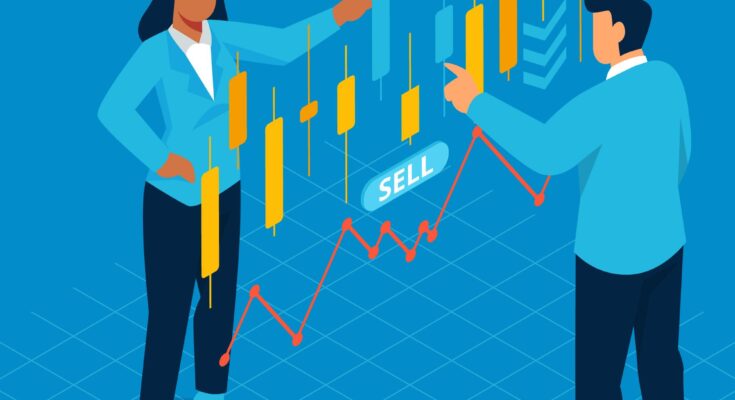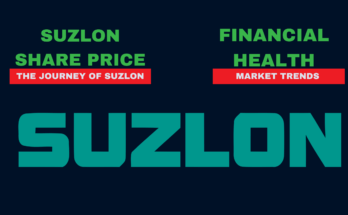What is futures and options?

What is futures and options – Futures and options are two popular financial instruments in the world of investments. They can be used for trading, hedging, and speculating on future price movements of various assets such as commodities, stocks, currencies, and indices. However, for beginners, understanding futures and options can be a bit daunting. In this blog, we will explore what futures and options are and how they are used in investing.
Also Read what is fpo in share market.
Futures
what is futures and options — A futures contract is a standardized agreement between two parties to buy or sell an asset at a future date and at a specified price. The assets could be commodities like gold, silver, or wheat, or financial instruments like stocks, bonds, and stock indices. Futures are traded on an exchange, and the exchange acts as an intermediary between buyers and sellers.

The key feature of a futures contract is that it helps to reduce the risk of price fluctuations for both buyers and sellers. For instance, let’s consider a farmer who grows wheat. By entering into a futures contract, the farmer can sell the wheat in advance and secure a price, thereby hedging against possible price falls. On the other hand, the buyer of the wheat, such as a bakery, can purchase the wheat at a fixed price and ensure an adequate supply, thereby hedging against a price rise.
Another essential feature of futures trading is margin trading. The margin is a sum of money that a trader needs to deposit with the broker to enter into a futures trade. The margin ensures that the trader has sufficient funds to cover potential losses.
Also Read B2B Spice Money Com: Enabling Financial Empowerment for Businesses
Options
An option is a contract that gives the buyer the right but not the obligation to buy or sell an asset at a specified price on or before a specific date. Unlike futures, options trading is decentralized, and there is no exchange acting as an intermediary. Instead, options are traded directly between buyers and sellers.
Also Read RBI Approved Loan Apps in India: Your Guide to Safe Borrowing
There are two types of options- call options and put options. Call options give the buyer the right to buy an asset, while put options give the buyer the right to sell an asset. Options are used both for speculation and hedging. For instance, an investor who believes that a stock price will rise in the near future can purchase a call option, which gives him the right to buy the stock at a fixed price. If the stock price rises above that price, the option holder can make a profit.
Like futures, options trading also involves margin trading. Options have a premium associated with them, which is the price the buyer has to pay to purchase the contract.
Advantages of Futures and Options trading | what is futures and options
what is futures and options – One of the significant advantages of futures and options trading is that they allow investors to leverage their investments. With a small deposit, investors can control a much larger amount of assets, enabling them to amplify potential profits. However, leverage can also lead to more significant losses, so it’s important to use it judiciously.
Another advantage of futures and options trading is that they can be used to hedge against potential risks. By entering into a futures or options contract, investors can lock in a price and protect themselves from adverse price movements.
what is futures and options – In conclusion, futures and options are powerful financial instruments that can be used for trading, hedging, and speculating on various assets’ price movements. Nevertheless, being a complex area of investing, it necessitates thorough research, analysis, and understanding of risk management strategies. Therefore, it is advisable to seek the advice of a qualified financial advisor before investing in futures or options.
Understanding Futures and Options: Essential Tools for Investors
what is futures and options – When it comes to the world of finance and investing, two terms that often garner attention are futures and options. These financial instruments offer unique opportunities for investors to engage in trading, hedging, and speculating on various assets. In this blog, we will dive into what futures and options are and explore their characteristics and applications.
Futures
- A futures contract is a standardized agreement between two parties to buy or sell an asset at a predetermined price at a specified future date. These assets can include commodities like crude oil or gold, financial instruments like stocks or bonds, or even currencies and indices. Futures contracts are typically traded on regulated exchanges, acting as intermediaries that facilitate transactions between buyers and sellers.
- One key feature of futures contracts is the obligation they impose on both parties to fulfill the contract’s terms. This means that the buyer is obligated to purchase the asset, and the seller is obligated to deliver it, at the agreed-upon price and date. This commitment mitigates the risk associated with price fluctuations in the underlying asset, as buyers and sellers are protected from unexpected price movements.
- In addition to providing a means for hedging against price risks, futures contracts also enable investors to speculate on the price movements of assets. By taking a long position (buying) or a short position (selling), investors aim to profit from accurately predicting future market conditions.
- To facilitate futures trading, participants are required to deposit an initial margin with the exchange. This margin serves as collateral and ensures that traders have sufficient financial resources to meet potential obligations resulting from adverse market movements.
Options
- Options are financial contracts that provide the holder (buyer) the right but not the obligation to buy or sell an asset at a predetermined price within a specified period. This period, known as the exercise or expiration date, adds an element of flexibility to options trading, allowing investors to choose whether or not to execute the contract.
- Call options and put options are the two forms of options. A call option grants the holder the right to purchase the underlying asset at a fixed price, whereas a put option grants the holder the right to sell the underlying asset. Asset at a specified price.
- Options grant investors the opportunity to profit from price movements without the same level of risk associated with futures contracts. Buyers of options pay a premium upfront, which represents the cost of holding the option and provides them with the right to exercise or not exercise it.
- This flexibility of options makes them valuable tools for hedging against potential risks, as well as for speculating on price movements. Investors can construct sophisticated strategies, such as combinations of multiple options and futures contracts, to meet their specific investment objectives.
Advantages of Futures and Options Trading | what is futures and options
- what is futures and options – Futures and options trading come with several advantages, making them attractive to a wide range of investors:
- Hedging: Futures and options contracts allow investors to mitigate potential risks associated with price fluctuations in the underlying asset, enabling effective hedging strategies.
- Leverage: Through futures and options, investors can control a larger amount of assets with a smaller upfront investment, amplifying potential returns.
- Market Liquidity: Futures and options contracts are frequently traded on organized exchanges, providing high liquidity and ensuring the ability to enter and exit positions with ease.
- Diverse Asset Classes: Futures and options cover a wide range of asset classes, allowing investors to participate in different markets and diversify their portfolios.
- Flexibility: Options offer the flexibility to choose whether or not to exercise the contract, providing investors with multiple strategies for profit and risk management.
what is futures and options – In conclusion, futures and options are essential tools in the world of finance and investing, offering unique opportunities for traders, hedgers, and speculators. They provide risk management tools, potential for profit, and the ability to participate in diversified markets. However, it is important for investors to thoroughly understand the mechanics, risks, and strategies associated with futures and options trading before engaging in these activities. Seeking the guidance of a qualified financial advisor can greatly assist in navigating this complex field.





2 Comments on “what is futures and options – Understanding Futures and Options in Investing”